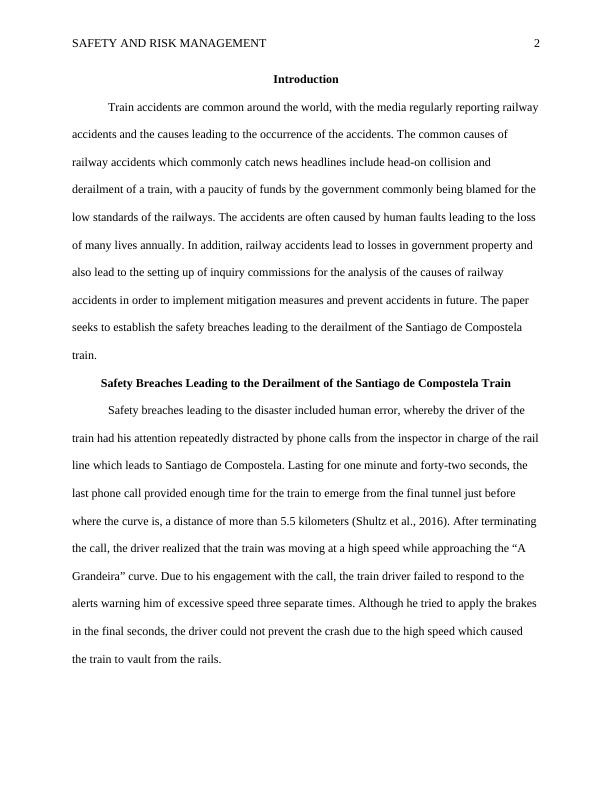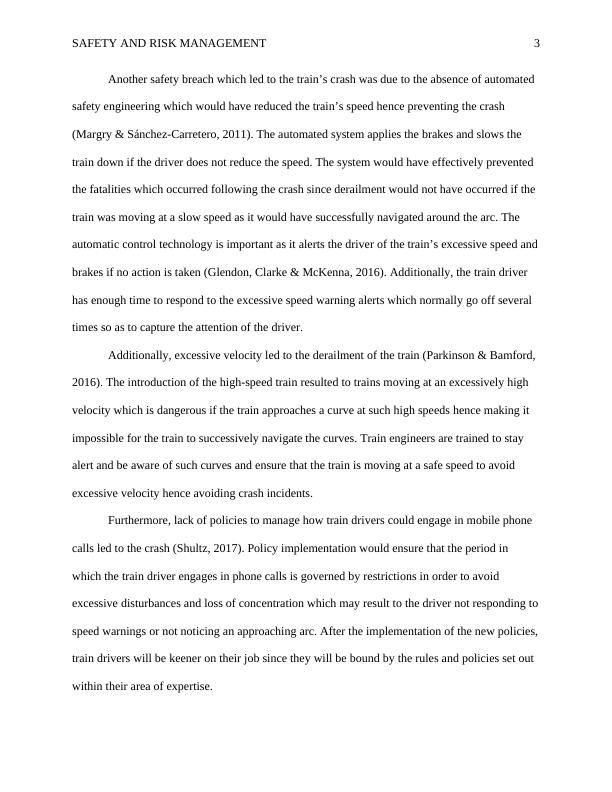Safety Breaches Leading to the Derailment of the Santiago de Compostela Train
8 Pages2168 Words415 Views
Added on 2023-06-05
About This Document
The paper discusses the safety breaches leading to the derailment of the Santiago de Compostela train, changes in policy and practice resulting from the incident, and the importance of implementing remedial measures to prevent future accidents. The study highlights the need for effective responsibilities and accountability, professional operation and management of railways, and the introduction of advanced technologies in the railway sector.
Safety Breaches Leading to the Derailment of the Santiago de Compostela Train
Added on 2023-06-05
ShareRelated Documents
End of preview
Want to access all the pages? Upload your documents or become a member.
Train Accidents and Safety Breaches Paper 2022
|10
|2253
|22
Safety and Risk Management: Waterfall Train Accident, New South Wales
|10
|2283
|181
Waterfall Train Crash Accident Safety Breach Critical Review
|7
|2031
|250
Waterfall Accident Case Study 2022
|10
|2082
|14
The crash at Kerang: Investigating systemic
|9
|2149
|288
Risk and Safety Management: Analysis of Richmond Train Crash Incident
|10
|2087
|396



